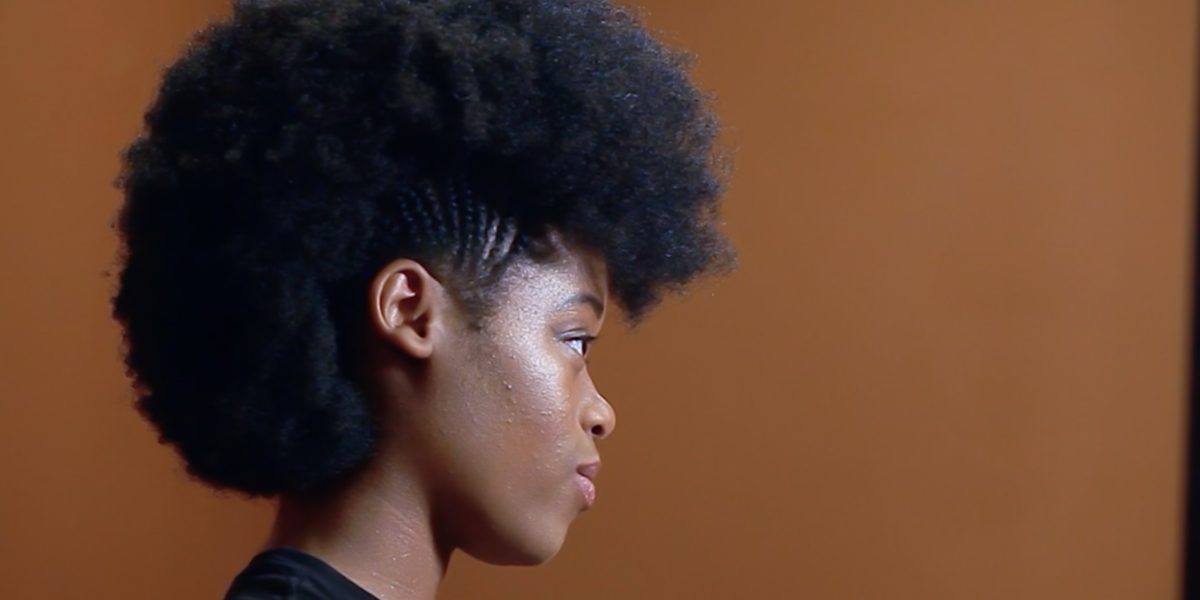The bold new film documentary, Subjects of Desires, investigates the ways Eurocentric ideals of beauty impact Black women and girls. The film is well-researched and powerful, yet its expert analyses, personal storytelling, and stunning cinematic quality, means the topic is handled sensitively and with care. Its central premise is: beauty is more than subjective aesthetic preference for style and fashion.
Archival material spliced throughout the film, traces the history of Eurocentric ideals back to the sexual and emotional violence against Black women under slavery and Jim Crow. Until today, Eurocentric ideals dictate what it means be considered beautiful, desirable, and loveable in white societies by white people.
The film affirms Black women’s agency, personal aesthetic choices, and beauty’s symbolic power but it insists that beauty has social, psychological, political, and material implications.
Thoughtful orchestration of archival material, interviews, and visually stunning cinematic techniques, asserts that Black bodies are desirable, beautiful, and worthy. Visual and textual references reveal the white supremacy in racist representations of Black women; ‘Mammies’ are fat, desexualized, dutiful servants who faithfully nurture and care for the children of the ‘white Master’; the hypersexualized and promiscuous ‘Jezebel’, and the mean and dominating ‘Sapphire’. The audience sees how these racist symbols are rebranded overtime but the underlying white supremacist ideology remains the same; Black women’s bodies and sexuality are considered deviant, degenerate, and ugly.
The film’s brilliance is how it at once dismantles Eurocentric beauty standards while creating new space to represent and reclaim black beauty.
Subjects of Desire avoids familiar essentialist cliches and stereotypes of what it means to be Black and beautiful. All the participants express their unique perspectives on Black beauty. It avoids rigid definitions of beauty and blackness, and at the same time, innovatively produces positive images of Black beauty.
The film’s creators do not shy away from controversial topics like intraracial dynamics, Blackfishing, and colourism.
Colourism is a term for the colour-coded hierarchy wherein African-Americans with lighter skin tones are considered closer to whiteness and are afforded resources and opportunities otherwise exclusively available to white people (or rather, not available to those with darker skin tones). The film shows the historical roots of colourism-based prejudices whereby African-Americans who fail ‘the comb test’: Black people with straight hair preferred over those with curly hair texture; ‘the brown bag test’; skin tone must not be darker than a light brown paper bag; and ‘the blue vein test’: black skin must be so light that the person’s veins are visible. These colourist markers were deployed to exclude dark skinned Black people from entry to exclusively light-skinned African-American private clubs, churches, sororities, and other social institutions.
These colour coded intraracial dynamics privilege African-Americans with lighter skin tones and more Eurocentric features. Colourism continues to shape African-Americans’ career successes and choice of life partners. The film rightly stressed that colourism shapes Black men’s tendencies for selecting white, or light-skinned Black women, as the romantic partners. But the film went further. It underscored that freedom to choose one’s partner cannot, singlehandedly, explain Black men’s overwhelming preference for lighter skin, straight hair, and other features dictated by Eurocentric standards.
The discussion on blackness and colourism’s favouritism for proximity to whiteness sets up the context to explore the problematic nature of transracial claims, like those of Rachel Dolezal and Jessica Krug.
This disturbing contemporary phenomenon is known as Blackfishing. White social media influencers and celebrities deliberately darken their skin tones, surgically or artificially alter parts of their bodies, such as their lips and buttocks, to mimic physiognomic features associated with Black people. On Black bodies, especially feminine Black bodies, these features were historically deemed ugly, deviant, and undesirable. On white women, it is considered fashionable and desirable. The film is clear: Blackfishing is a form of symbolic violence. The female Black body is broken up, fragmented, repackaged for white pleasure and appropriation, to gain attention and money. Though, the film underlines that not all white people who want to ‘pass for Black’ are motivated by material gains, as with the case of Rachel Dolezal.
The film is informative and empowering: it tackles Black beauty’s historical roots, from the intersectionality of race, class, and power, in smart and compelling ways. Every scene moves seamlessly to the next and reinforces preceding ideas. It is accessible to academics and non-academics, middle-schoolers and university students, alike. I consider it one of the most powerful anti-racist and decolonial teaching tools available to educators and researchers.
To listen to Amina’s conversation with director Jennifer Holness, tune into rabble radio’s latest episode here.




